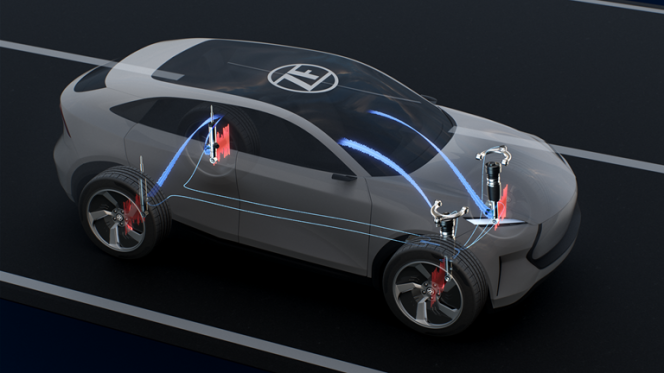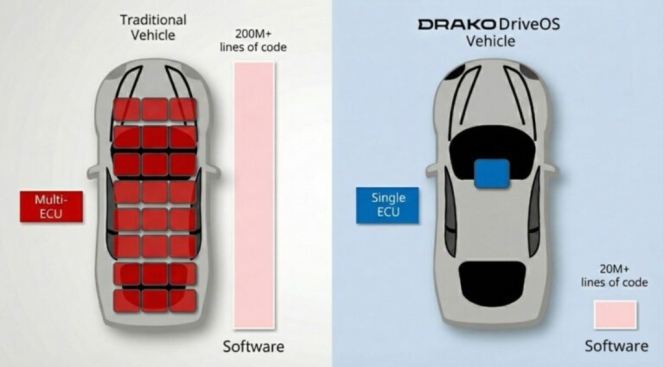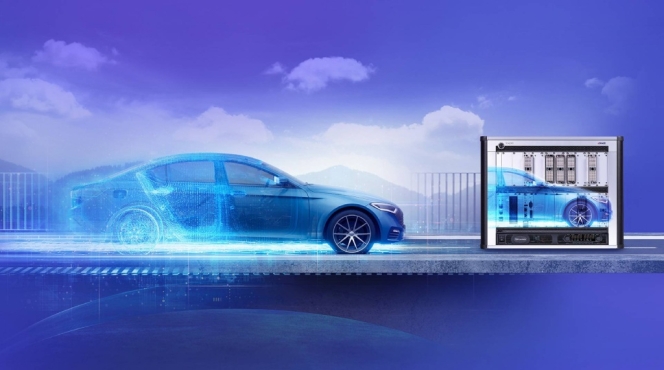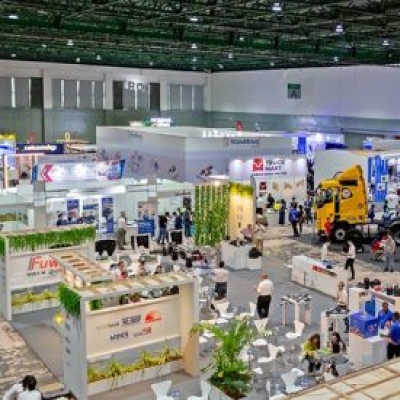
BASF and Toyota Motor North America Research & Development achieved lightweighting success with the new 2021 Toyota Sienna. The vehicle, scheduled to launch later this year, just won the prestigious Altair Enlighten Award for achievements in vehicle weight savings for reduced mass of the third row seat.
In the previous model, the third-row seat was comprised of 15 different steel components, making it very heavy. Toyota wanted the 2021 Sienna’s third seat to be lighter and cost competitive while exceeding all performance criteria. Toyota turned to BASF to help them achieve their lightweighting goal.
“Lightweighting doesn’t always have to be more expensive,” said Todd Muck, from the Toyota Technical Strategic Planning Office at the Toyota R&D Center in Saline, Michigan. “We were able to meet our cost objective and saved 15% compared to the prior generation. The seat is 30% lighter compared to the previous model. We had some great partnerships that helped us achieve these targets, one of which was BASF.”
Traditionally, resin components for seating have had metal reinforcement, which can add more cost to the process. Toyota also wanted an injection molding part that was a shoot-and-ship part – meaning it was made in one piece, without complex and costly post-processing. That’s where BASF’s expertise in materials and design came in. BASF used its unique 35% glass-reinforced and impact-modified polyamide PA6 grade Ultramid® B3ZG7 CR, and its proprietary computer aided engineering (CAE) tool ULTRASIM® which allowed for an accurate CAE simulations during the multiple phases of development efforts.
“The third seat design is what I would classify as an enabling technology,” said Matt Parkinson, Manager Applications Development Engineering and Composite Technologies, BASF Performance Materials. “It is the first of its kind in the way it is designed without inserts as a fully injected seat back. One of the challenges was to ensure a high elongation and impact qualities for the crash requirements. At the same time, we focused on strength and stiffness because the seat also serves as a load floor.”
“BASF helped us bridge the challenge gap for this seat back and meet our targets,” said Muck. (MT)
NB: Photo is representational.
ZF To Present Software Active Noise Reduction For Vehicle Chassis At CES
- By MT Bureau
- December 17, 2025

German tier 1 supplier ZF is presenting a new ‘Active Noise Reduction’ software function for vehicle chassis at the Consumer Electronics Show (CES) 2026. The purely software-based function reduces in-vehicle tyre noise transmitted through chassis components without requiring additional hardware. The company plans to expand the use of the function to other ZF chassis actuators in the future.
The solution uses ZF’s Smart Chassis Sensor with an integrated acceleration sensor to measure vibrations from the tyres. A developed algorithm recognises the characteristic noise patterns of tyre cavity noise around 200 hertz.
The software generates a counter-signal via ZF’s cubiX software through the valves of semi-active dampers (CDC). The function uses micro-movements of the damper to specifically reduce noise interference without impairing the damper function.
The technology achieves noise reductions of more than 3 dB, with future potential for up to 10 dB. This software-based noise reduction is achieved without additional installation costs or space requirements. Active Noise Reduction can be adapted to different vehicle types via software, opening a market for lower-priced vehicles.
Dr. Peter Holdmann, Member of the ZF Board of Management and Head of Division Chassis Solutions, said, “Active Noise Reduction is an excellent example of how we use smart algorithms to make ZF components even more efficient. This gives our semi-active CDC dampers a clear unique selling point in the market and sets new standards in comfort – without the need for any additional noise dampening hardware.”
Series production is scheduled to start in 2028. In the future, the function may be used in other ZF actuators, such as for active reduction of brake squeal.
Holdmann added, “Thanks to our system expertise, we are able to offer our mechatronic actuators as true innovation drivers with the help of smart algorithms and we will extend our software-based control approach to other ZF actuators in the future. The goal for us is clear: mechatronic actuators that are capable of efficiently reducing both their own and external noise with the help of software.”
The new function fits into ZF’s Chassis 2.0 product strategy, which uses intelligent and networkable actuators to enable new chassis functions via software.
Holdmann noted: “With our Chassis 2.0, we are laying the foundation for the software-defined vehicle.”
Drako Tech Unveils DriveOS With Single-ECUArchitecture
- By MT Bureau
- December 17, 2025

California-based Drako Tech has announced DriveOS with HyperSafety, an automotive operating system designed for single-Electronic Control Unit (ECU) operation. The platform consolidates vehicle subsystems, including control systems, ADAS and digital cockpit, into one unit to reduce costs and enable over-the-air (OTA) updates.
Launched in 2015 and utilised in Drako GTE and Drako Dragon vehicles, DriveOS supports internal combustion, electric and hybrid propulsion systems.
The HyperSafety system provides real-time performance via a single-ECU architecture. According to Drako Tech, the networking backbone facilitates communication four times faster than multi-ECU Time-Sensitive Networking (TSN) automotive Ethernet.
The architecture employs hardware isolation and redundancy to maintain operation during component failures. By using a reduced code footprint and hardware partitioning, the platform aims to limit attack surfaces for cyber security and streamline validation processes.
Industry Integration
Drako Tech provides development environments that run natively on DriveOS:
- Control Systems: Allows engineers to build vehicle controls from Simulink models.
- Digital Cockpit: A system for instrument clusters, navigation and multimedia.
- ADAS: A software foundation for driver assistance with low-latency control.
The platform addresses the complexity of multi-ECU architectures, which typically require separate units for functions such as seats, doors and thermal management. Drako Tech uses a separation kernel to run safety-critical systems alongside non-critical systems, such as infotainment, on the same ECU.
DriveOS introduces hard real-time capabilities to Linux without requiring kernel changes. This allows developers to use Linux libraries and tools for safety-critical systems.
Key features include:
- Performance: 108-microsecond end-to-end performance compared to 514 microseconds for TSN Ethernet.
- Consolidation: The ability to move functions onto a single PC architecture to reduce hardware mass and complexity.
- Redundancy: Hardware-backed isolation ensures faults in one subsystem do not affect driving functions.
- Cloud Integration: Real-time fleet management and diagnostics without creating access paths to control systems.
Dean Drako, CEO, Drako Tech, said, “Nearly half of the cost of new vehicles is tied up in software and electronics. Drako Tech now offers all OEMs worldwide – regardless of size or influence – a definitive leap in their ability to deliver exceptionally safe, connected, AI-enhanced vehicles, with massive cost advantages. We are the first to achieve the ultimate goal – a single-ECU, hard real-time operating system and unified electronics architecture with mixed criticality – while providing OEMs a flexible deployment path.”
dSPACE To Present AI-Driven Test Solutions For SDV At CES 2026
- By MT Bureau
- December 17, 2025

German technology company dSPACE is set to showcase end-to-end test solutions at CES 2026 to assist vehicle manufacturers with the development of software-defined vehicles (SDV).
The company will present a validation portfolio featuring AI-supported software-in-the-loop (SIL) and hardware-in-the-loop (HIL) solutions.
It is exploring how generative and agentic AI technologies can support SIL testing and enable CI/CD pipelines for validation. An exhibit will demonstrate a Visual Studio Code and GitHub Copilot solution for the generation of virtual ECUs for SIL tests.
To meet the requirements of short-cycle development, dSPACE is demonstrating a CI/CT concept presenting a cloud-native validation approach. This includes a GitLab pipeline integrated with VEOS, the dSPACE SIL test software, and SCALEXIO, the HIL test platform.
dSPACE is also presenting a HIL Farm Management Demo designed to increase test efficiency. This displays the availability and utilisation of HIL systems and potential errors to reduce system downtimes and improve the use of test resources.
The technology company will use its test solutions for battery charging and battery management systems to demonstrate end-to-end SIL/HIL validation. Efficiency is increased by reusing test cases, simulation models, bus configurations and user interfaces across both methods. This allows for the demonstration of functions, including conformance tests, with the same layouts and cases.
The company is introducing DARTS ARROW, a radar solution for functional testing of sensors. Developed for end-of-line tests and periodic technical inspections, it validates safety systems such as emergency braking and lane departure warnings by simulating traffic scenarios to detect sensor errors.
For security, dSPACE will present HydraVision, a cybersecurity test framework. Using test case templates, it allows for the integration of cybersecurity tests into the development process to identify and mitigate weak points.
Additionally, the new SCALEXIO Essential system expands the SCALEXIO real-time platform. It is designed for the validation of edge ECUs for mechatronic applications in the automotive, agricultural, and construction machinery sectors. The system includes a software package and is intended as a cost-efficient entry point for HIL testing.
Greaves Cotton Appoints Santosh Singh As Chief Strategy And AI Officer
- By MT Bureau
- December 16, 2025

Greaves Cotton has appointed Santosh Singh as Chief Strategy and AI Officer. He will be based in Mumbai and will lead strategy, transformation, AI-led enterprise capability building and business excellence for the Greaves Cotton Group.
Singh comes with over two decades of experience in strategy, business excellence, innovation, and AI-led enterprise transformation. He joins Greaves Cotton from Tata Technologies (TTL), where he served as Global Head – Marketing and Business Excellence. During his tenure there, he co-led the enterprise GenAI roadmap and developed use cases focused on customer engagement and productivity.
His primary mandate is to drive the Greaves.NEXT strategy, the company’s roadmap for growth across the energy, mobility and industrial solutions sectors.
In his new role, Singh will focus on accelerating growth for Greaves Technologies (GTL), developing an enterprise-wide AI roadmap, and establishing partnerships with hyperscalers and AI labs.
Parag Satpute, Managing Director & Group CEO, Greaves Cotton, said, “We are pleased to welcome Santosh to the leadership team. His extensive expertise in strategy, digital transformation, and AI will play a significant role in shaping Greaves’ next phase of growth. His global experience will further strengthen our innovation roadmap and support our long-term business priorities.”
Singh will also work across business units to incubate and scale growth vectors and lead business excellence initiatives.






Comments (0)
ADD COMMENT